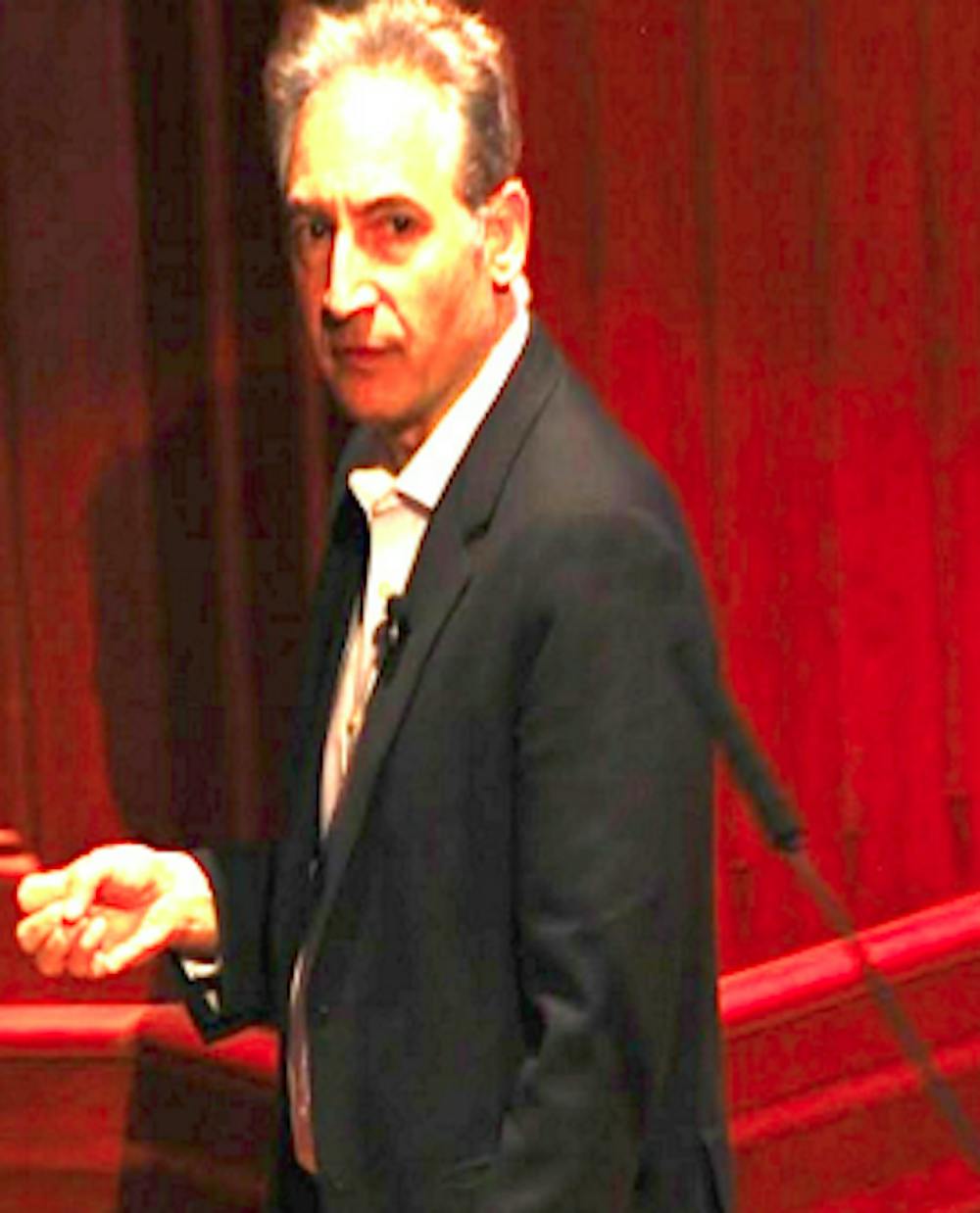By Chelsie Derman
Staff Writer
Theoretical physicist Brian Greene visited Mayo Concert Hall on Oct. 23, where he presented the perplexing concept of black holes to students and faculty.
Greene’s main area of study, string theory, refers to the invisible strings in the universe that help gauge what’s inside a black hole. These strings indicate the existence of multiple dimensions, said Greene, such as the new dimensions existing if one were to move up, down, to the side or after the passage of time.

“They are exciting intrinsically,” Greene said, eager to share his knowledge on black holes with the students in attendance.
Before the presentation began, Dean of the School of Arts and Communications Maurice Hall recognized Greene for his accomplishments, specifically his four books, “The Elegant Universe,” “The Fabric of Cosmos,” “The Hidden Reality” and “Icarus At The Edge of Time.” His work has ultimately earned him a spot on the New York Times bestsellers list.
According to Hall, his books tell a complex concept in a comprehending fashion, as they offer “an amazing conversation with the reader (about) what the physical universe is like.”
After Hall’s introduction, Greene dove into what led him to study physics, specifically black holes and string theory. He started from the early history of the field, as he gave a historical background on Isaac Newton and Albert Einstein.
“(Newton is) a vital step forward in trying to understand this force,” Greene said in reference to the black holes.
Midway through his lecture, Green displayed a moving three-dimensional grid — a way to show how the lines curve around the sun. Einstein had developed this grid-concept.
“This is how gravity is communicated,” Greene said, explaining how the planets move with these curves and orbit in the same direction.
Trying to discover more about the internal structure of black holes, Greene discussed the Gravitational-Wave Observatory and the two detectors that ran in a tunnel from Livingston, La. to Hanford, Wash. This tunnel was a faux simulation of a black hole. Lasers shot from both ends of the tunnel until both of their ends connected. Greene said the way the lights recombined was a “telltale sign” of what happens inside a black hole.
“A precise twitch you can see (had) twitched in exactly the same way,” Greene said, which indicated the ripple in the fabric of space headed close to Earth.
Overall, Greene saw black holes as a “part of artistic exploration.”
Greene wrapped up his presentation by reiterating what he said in the beginning of the night: that the string theory has yet to face experimental confirmation. Although the string theory has yet to be proven, Greene knows he would not be discouraged if the theory turns out to be false.
“If we can prove the string theory is wrong, I will be thrilled because we can move on to new things,” Greene said.
For now, scientific ideas can be explored and Greene shares the medium in which this is possible.
“Art made it the key to doing that,” he said.







